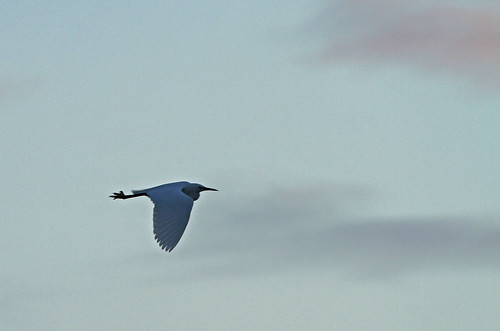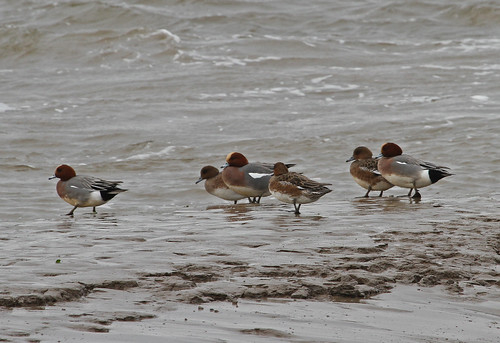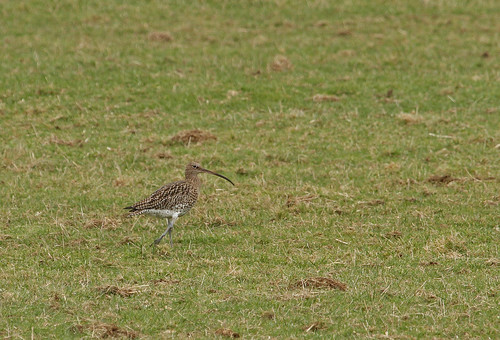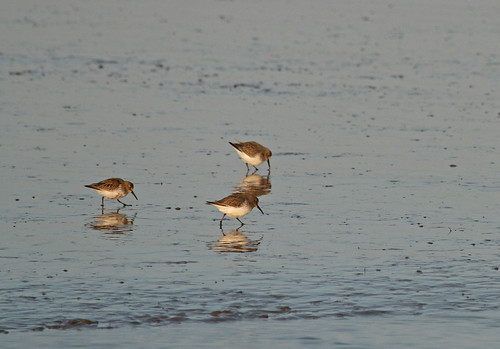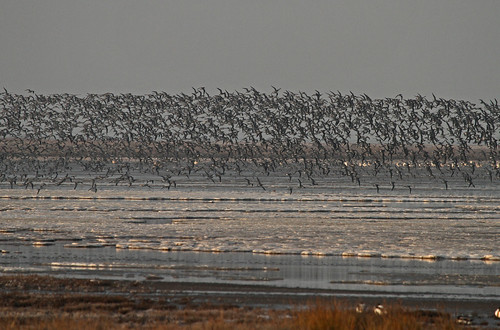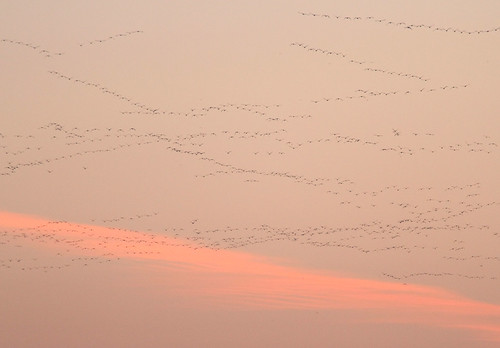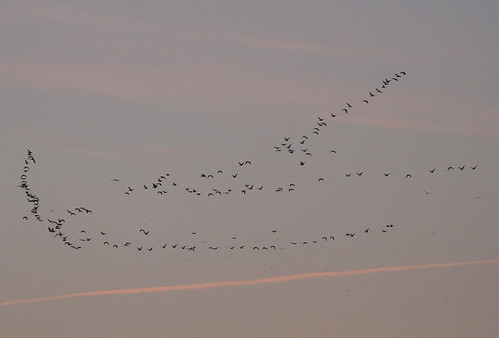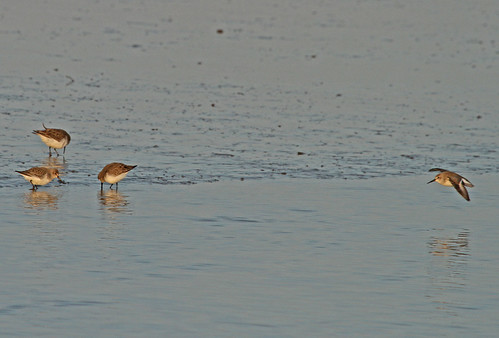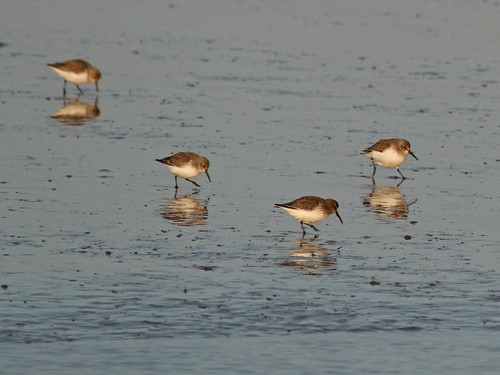RSPB Titchwell has a ‘linear’ layout encompassing various habitats and that make it a good place to see a diverse range of bird species. Following on from my last post here are few more waders, wildfowl and geese that were in residence when I was last there in November last year.

Shoveler pair – Spatula clypeata
The shoveler inhabits shallow lakes and marshland where there is open water and it can be seen all year round in the UK. It breeds in the UK before heading south for the winter when the breeding population is replaced by visitors migrating south from Scandinavia and eastern Europe. The size of the UK breeding population is around 1100 pairs.

Brent geese – Branta bernicla
The distribution of brent geese in the UK is interesting because their are three separate overwintering groups which migrate here to the UK. They come from Canada, Svalbard and Russia and overwinter primarily in Strangford Lough in Ulster, Lindisfarne in the UK and the rest of the UK respectively. There are 100-110,000 birds recorded annually in the UK but in the case of the Canadian and Svalbard visitors it’s easy to see how human activity could profoundly affect those very local populations. As these individuals were seen in Norfolk I guess they from the Russian cohort.

A flock of lapwing – Vanellus vanellus and golden plover – Pluvialis apricaria
Golden plover have a distinctive black face and breast stretching down to its legs in the summer but which fades to pale brown to white in the winter so the birds in this group all have their winter plumage which I would expect as this was in mid-November. The golden plover is resident all year in the UK with 33,000 breeding pairs in 2016 according the BTO and 410,000 individuals recorded in the winter of 2006-7 as the population swells in autumn as migrants arrive from the north.
The lapwing is for me an iconic bird and a sign of summer and I remember seeing big flocks of them over the farmland close to where I grew up in Northamptonshire. It’s now rare to see such flocks inland although I still see mixed flocks of lapwing and golden plover over the Cambridgeshire fens in the winter time. And that is refected in this mixed flock on the ground at Titchwell and it’s interesting to see the species separation on the ground.
RSPB Titchwell is a great place for a day out to see lots of wildlife in summer and winter. There is always something wonderful to see including migrants at the right times of year and I consider myself very lucky to live close enough to it to be able to make day trips there.











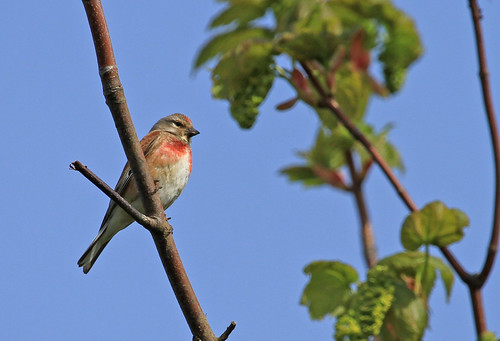





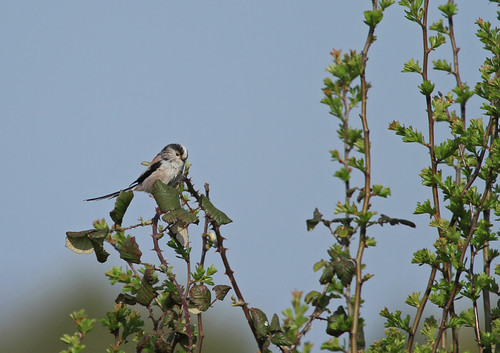









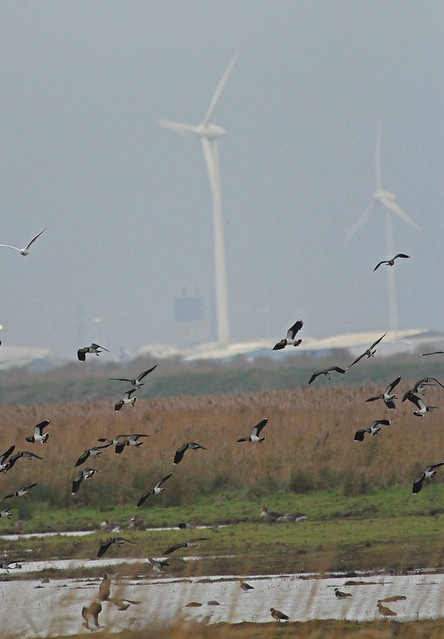
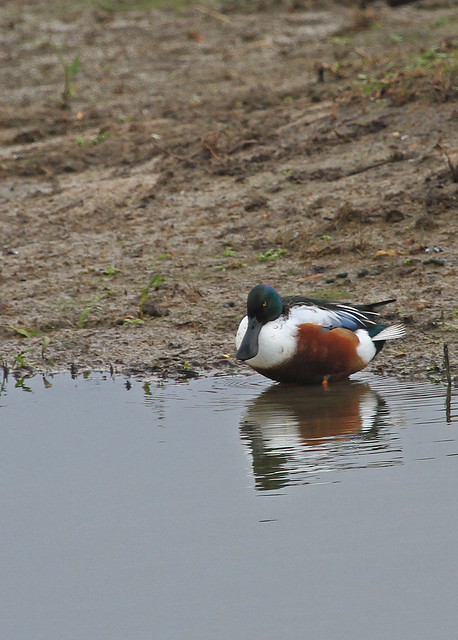

 Monarch butterfly –
Monarch butterfly –  Small copper – Lycaena phlaeas
Small copper – Lycaena phlaeas